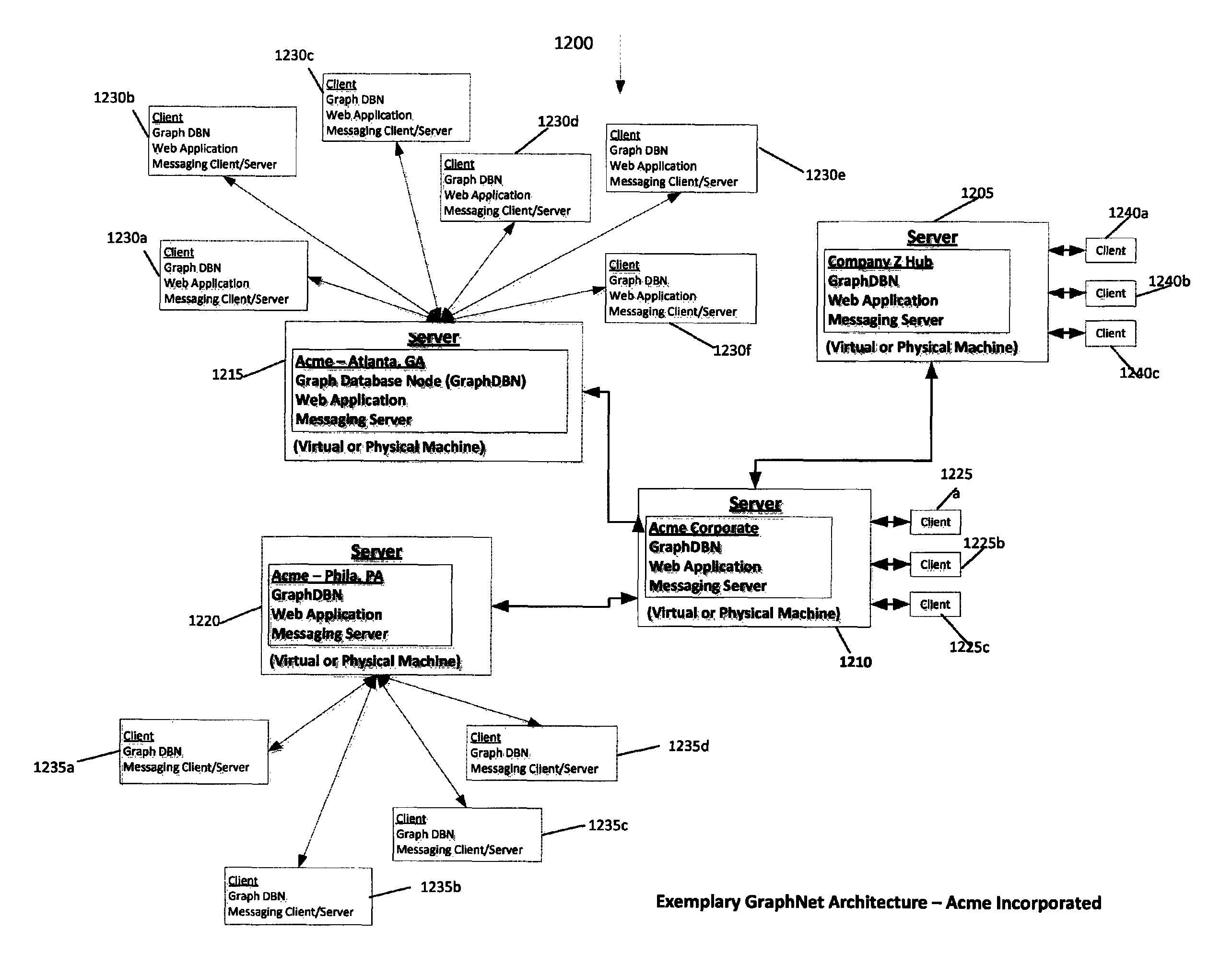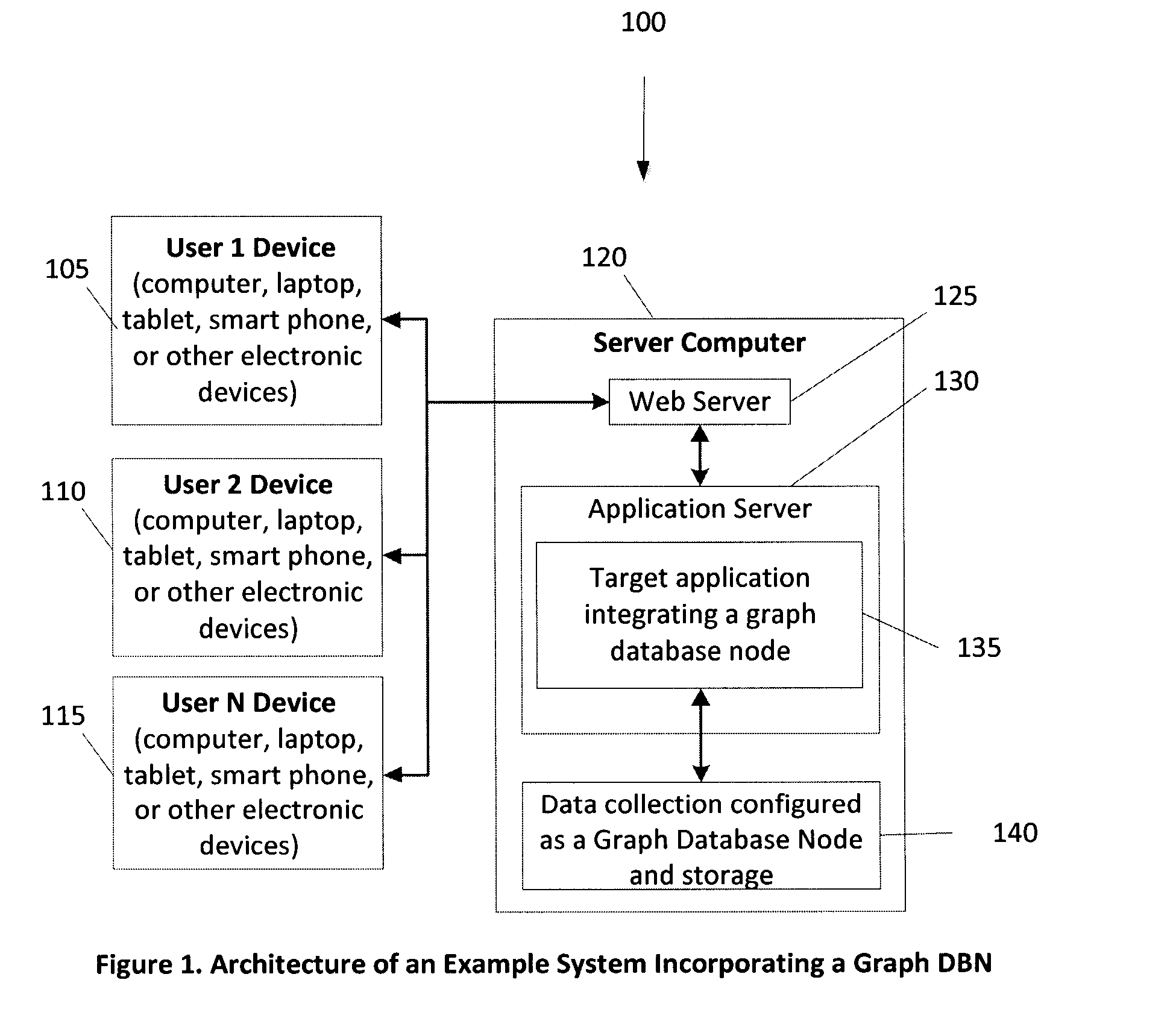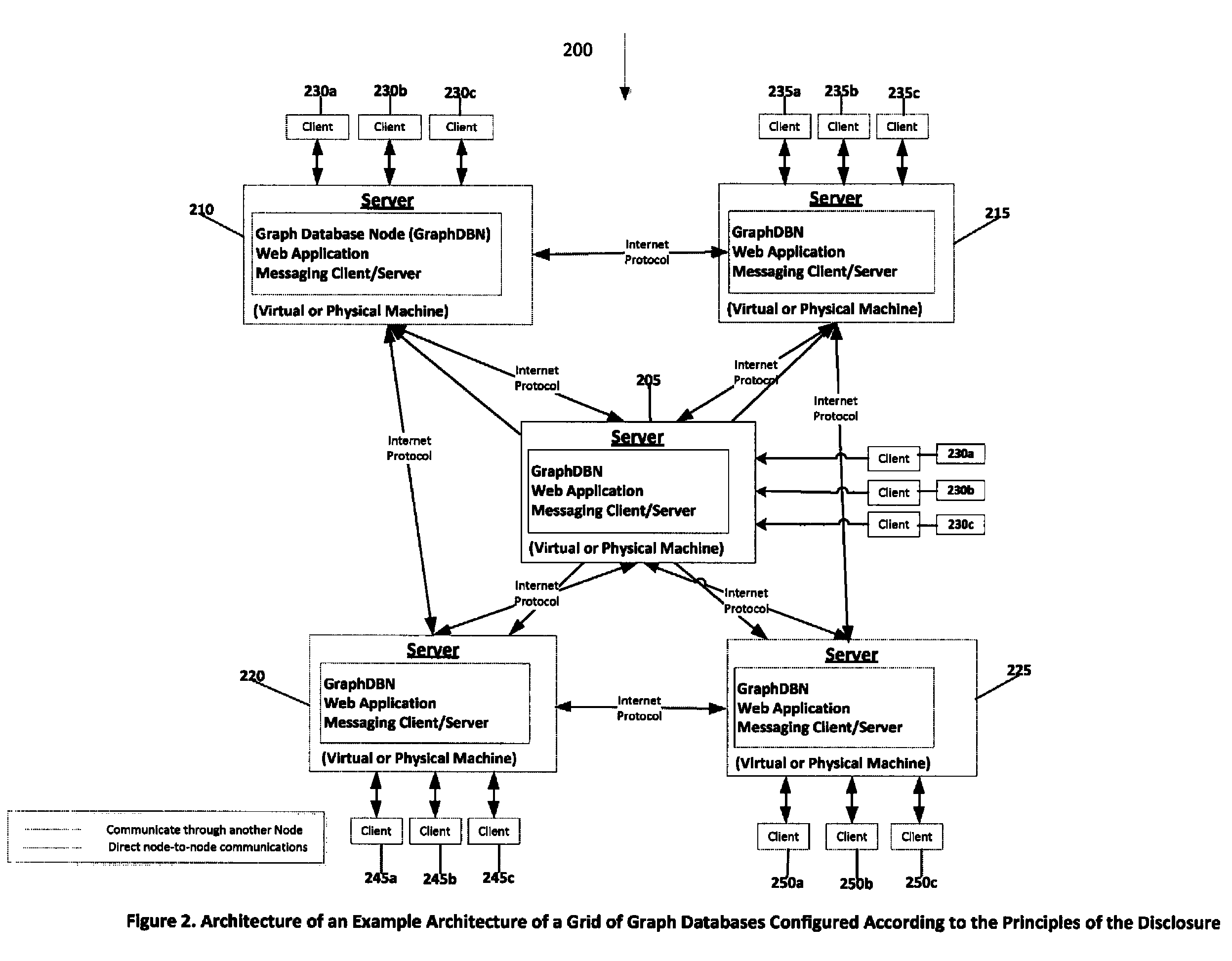System and method for creating, deploying, integrating, and distributing nodes in a grid of distributed graph databases
a graph database and distributed graph technology, applied in the field of information processing technology, can solve the problems that businesses or organizations cannot typically be able to seamlessly move information between cloud environments, between cloud and non-cloud environments, between multiple graph databases, etc., and achieve the effect of efficiently synchronizing distribution and synchronizing the distribution of nodes
- Summary
- Abstract
- Description
- Claims
- Application Information
AI Technical Summary
Benefits of technology
Problems solved by technology
Method used
Image
Examples
working examples
[0312]The principles of Distributed Graph Database and Node Management described in this disclosure may be implemented in a variety of software applications and may be delivered with or without a graphical user interface, using tools such as Java, Python, C#, C++, Flash, HTML, and the like. Exemplary implementations of a software application delivered through a web interface using internet communications protocols are described in this section. This exemplary software application creates graph database nodes that include data nodes and edges, deploys the graph database nodes, integrates the graph database nodes in a network of distributed graph databases (GraphNet), shares and merges subsets of graph databases nodes between graph database nodes or GraphNets in a variety of possible formats, and organizes graph database nodes and GraphNets as private internets, private clouds, and the like, all configured according to the principles of the disclosure.
[0313]One of ordinary skill in th...
PUM
 Login to View More
Login to View More Abstract
Description
Claims
Application Information
 Login to View More
Login to View More - R&D
- Intellectual Property
- Life Sciences
- Materials
- Tech Scout
- Unparalleled Data Quality
- Higher Quality Content
- 60% Fewer Hallucinations
Browse by: Latest US Patents, China's latest patents, Technical Efficacy Thesaurus, Application Domain, Technology Topic, Popular Technical Reports.
© 2025 PatSnap. All rights reserved.Legal|Privacy policy|Modern Slavery Act Transparency Statement|Sitemap|About US| Contact US: help@patsnap.com



